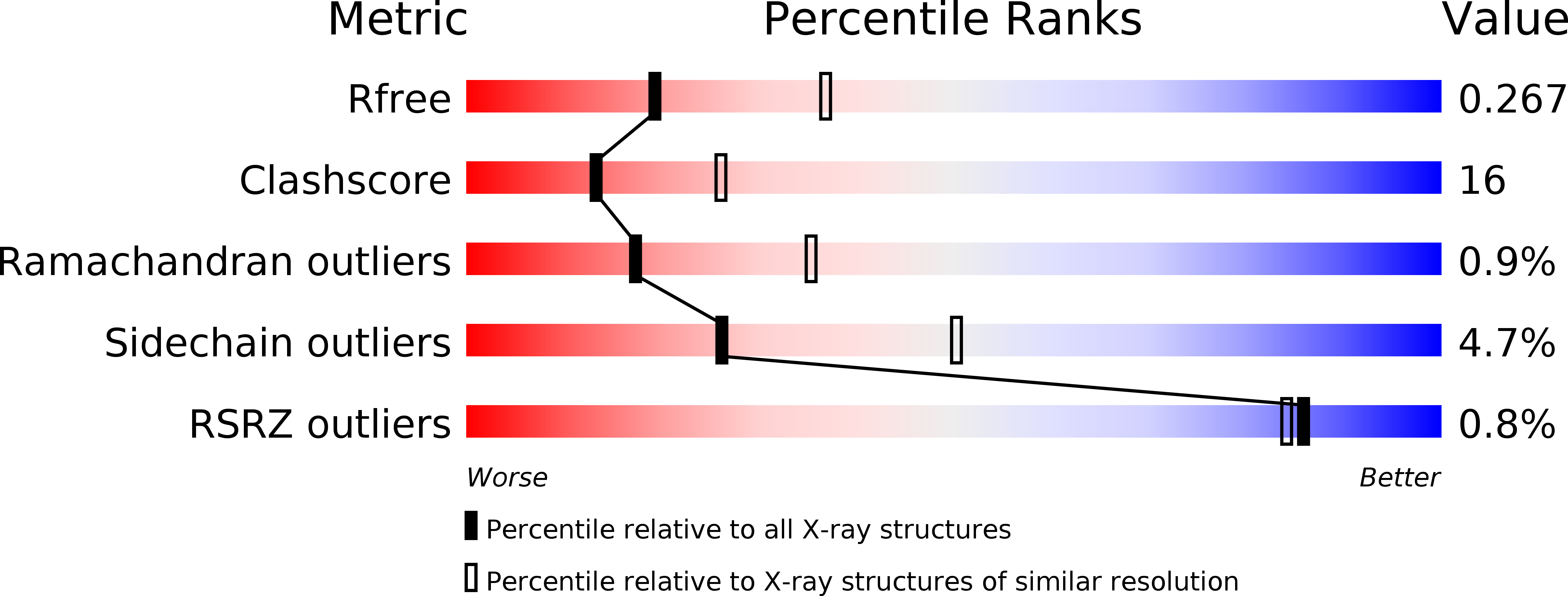
Deposition Date
2011-01-31
Release Date
2011-10-19
Last Version Date
2023-11-01
Entry Detail
PDB ID:
3AU7
Keywords:
Title:
Crystal structure of the ZRD-deleted mutant of TiaS in complex with agmatine
Biological Source:
Source Organism:
Archaeoglobus fulgidus (Taxon ID: 2234)
Host Organism:
Method Details:
Experimental Method:
Resolution:
2.60 Å
R-Value Free:
0.26
R-Value Work:
0.21
R-Value Observed:
0.21
Space Group:
P 63 2 2


